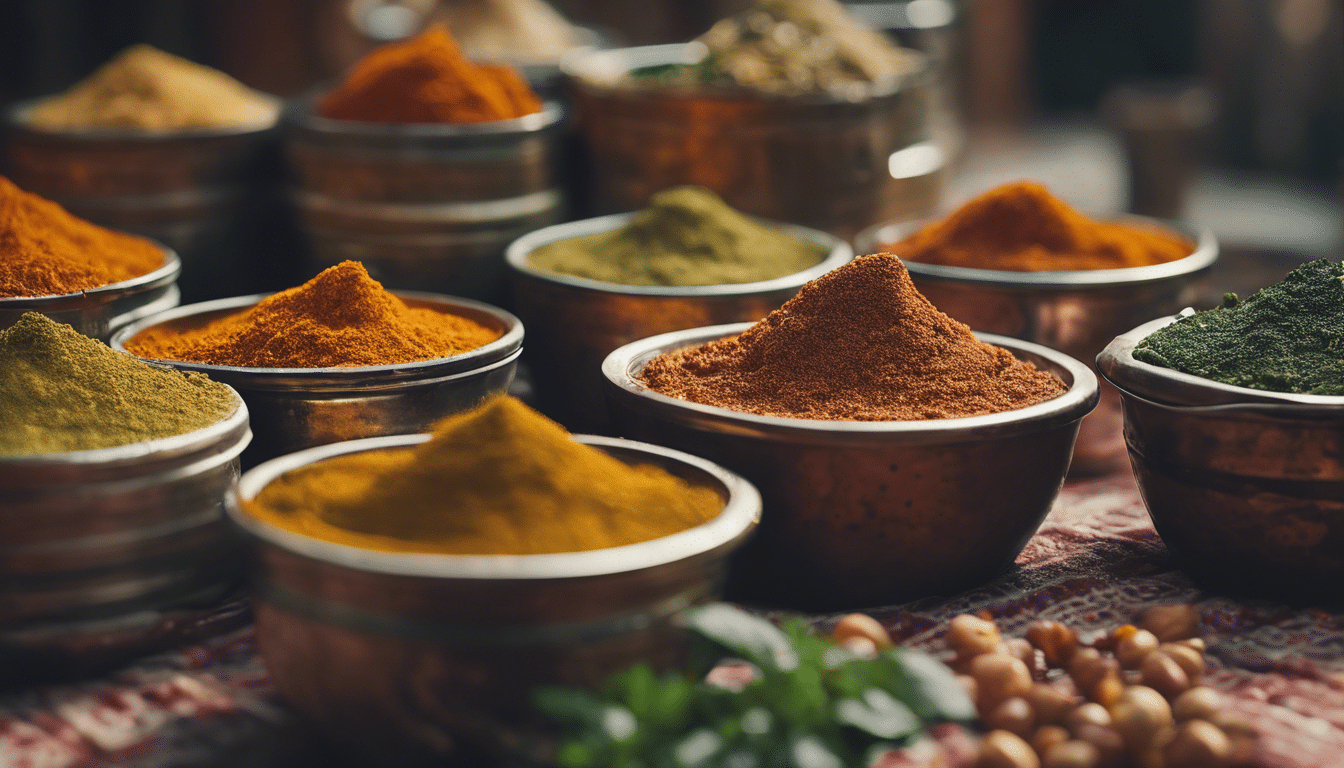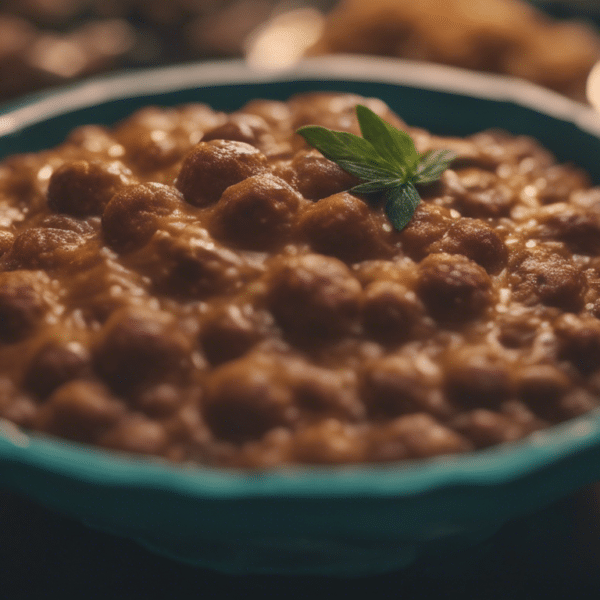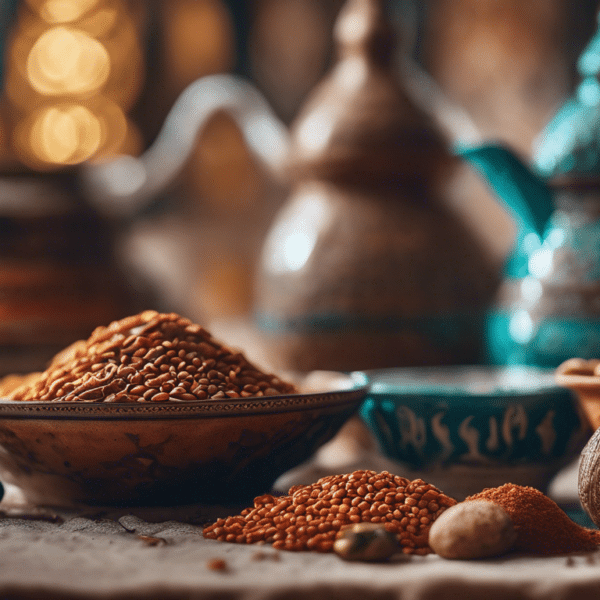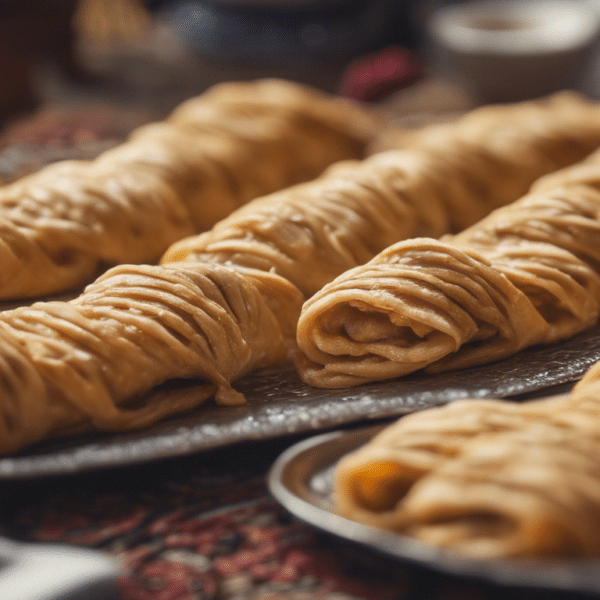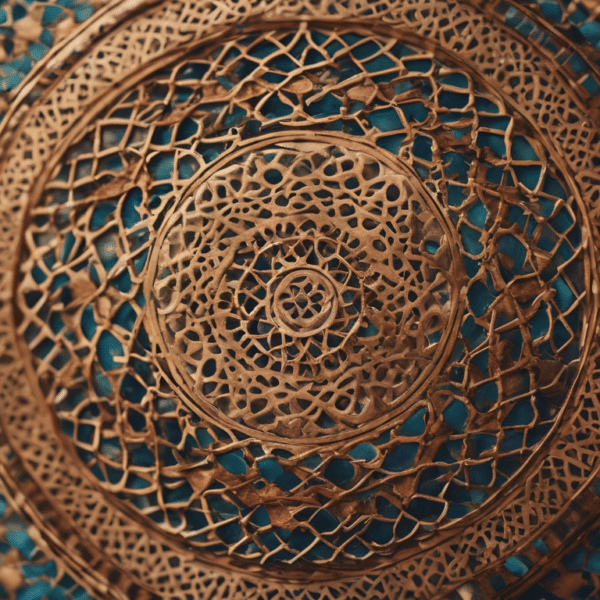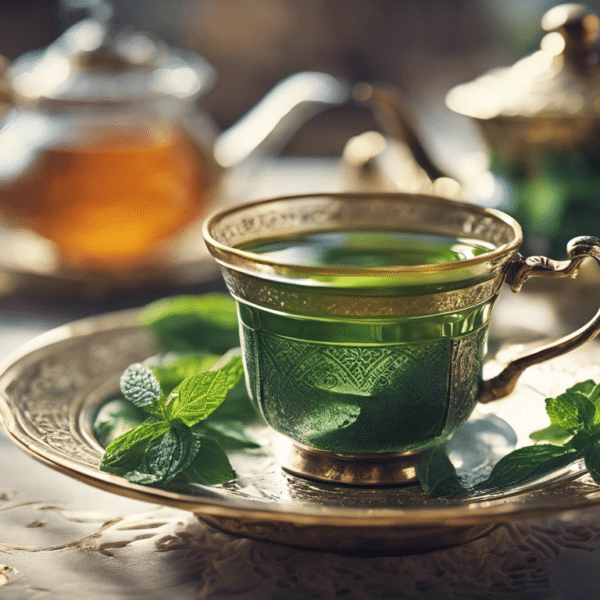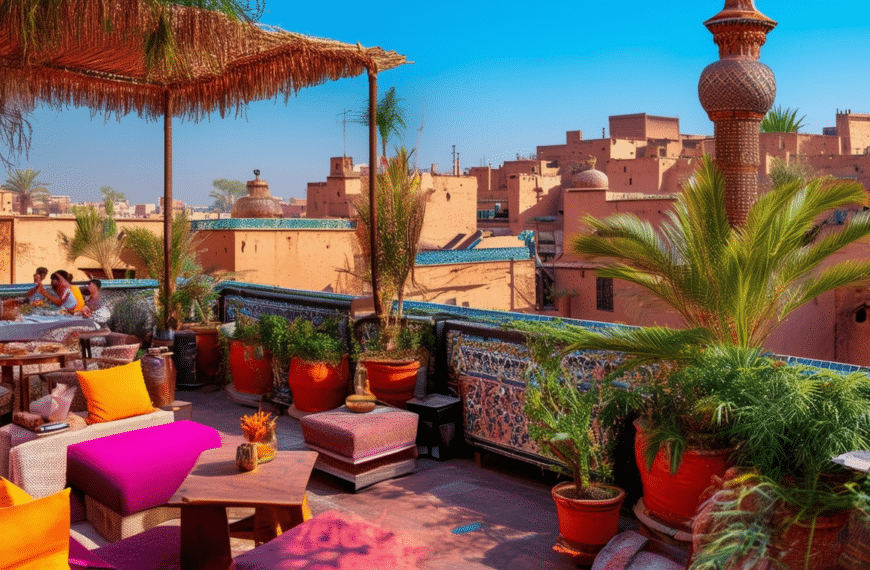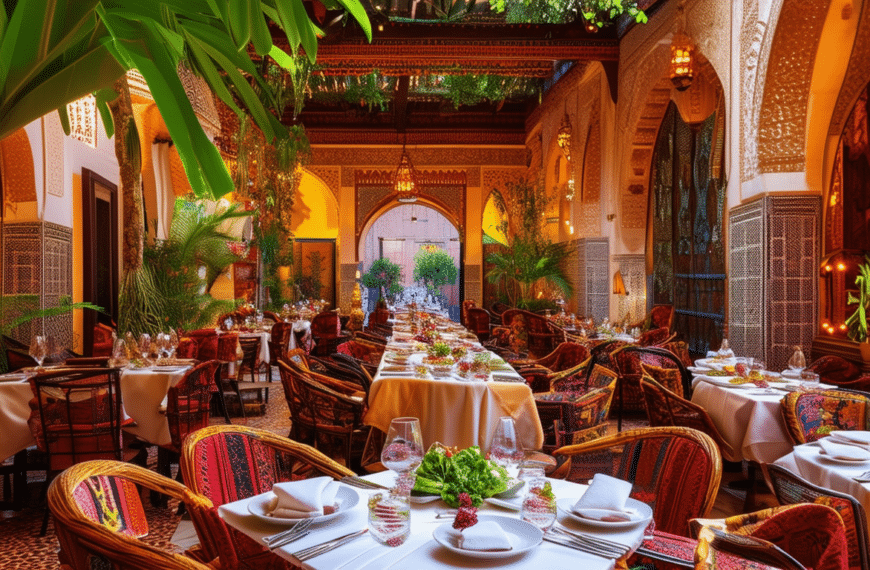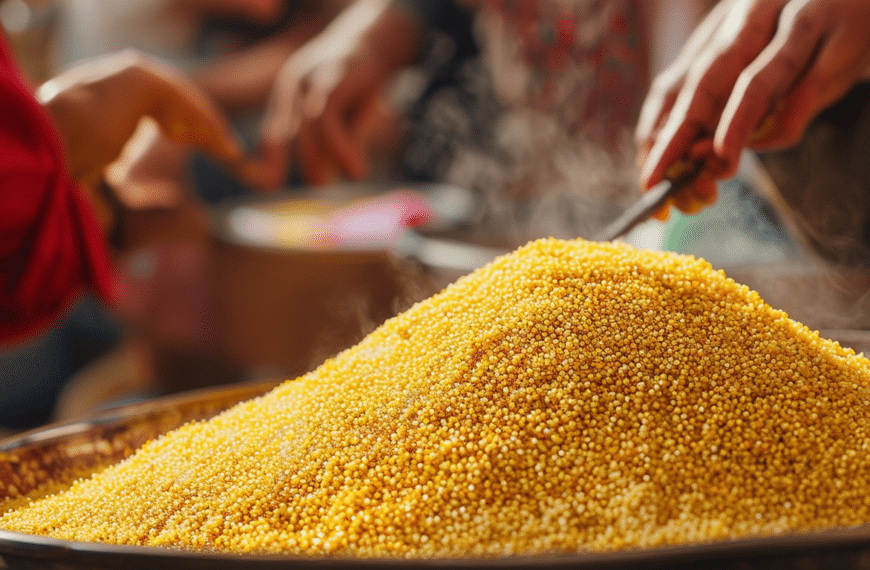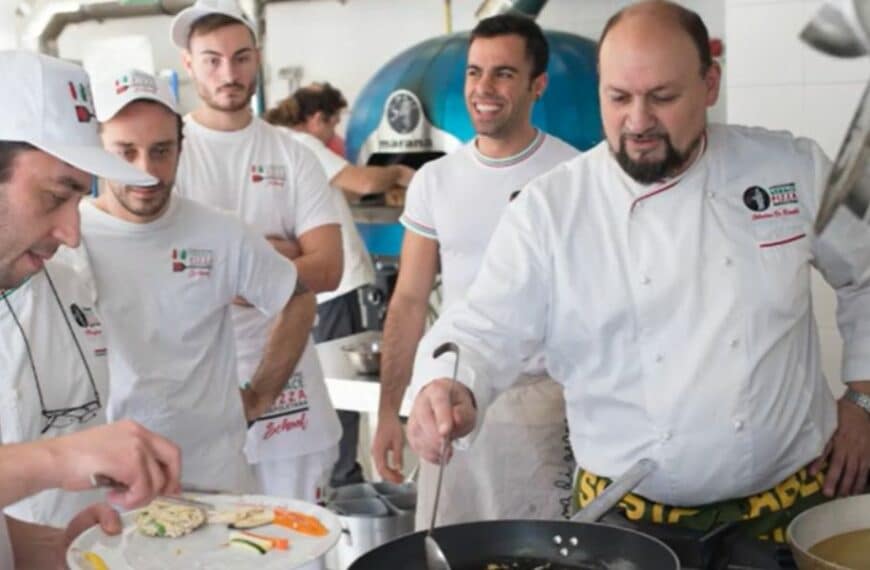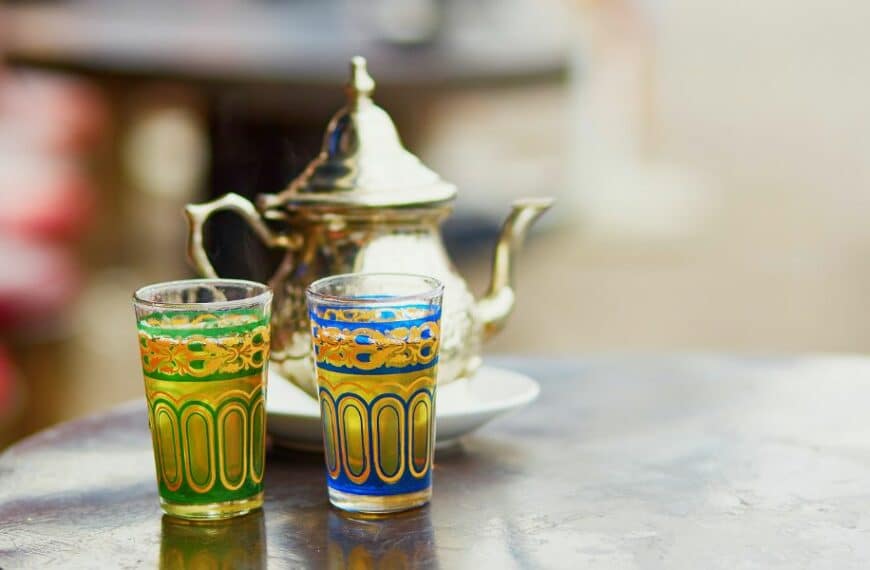Embark on a gastronomic odyssey as we unravel the secrets of Moroccan Chermoula, the enchanting marinade that is a symphony of herbs and spices, lending its bold flavors to transform the ordinary into the extraordinary. In a dance of coriander, cumin, and a melody of zesty citrus and chilli, we delve into lesser-known, yet utterly captivating, Chermoula fusions. These combinations are not just pairings; they’re culinary adventures waiting to be discovered by those with a wandering palate. Unleash the essence of Morocco in your cuisine—read on to discover the exotic blends that await.
Exploring the Richness of Moroccan Chermoula
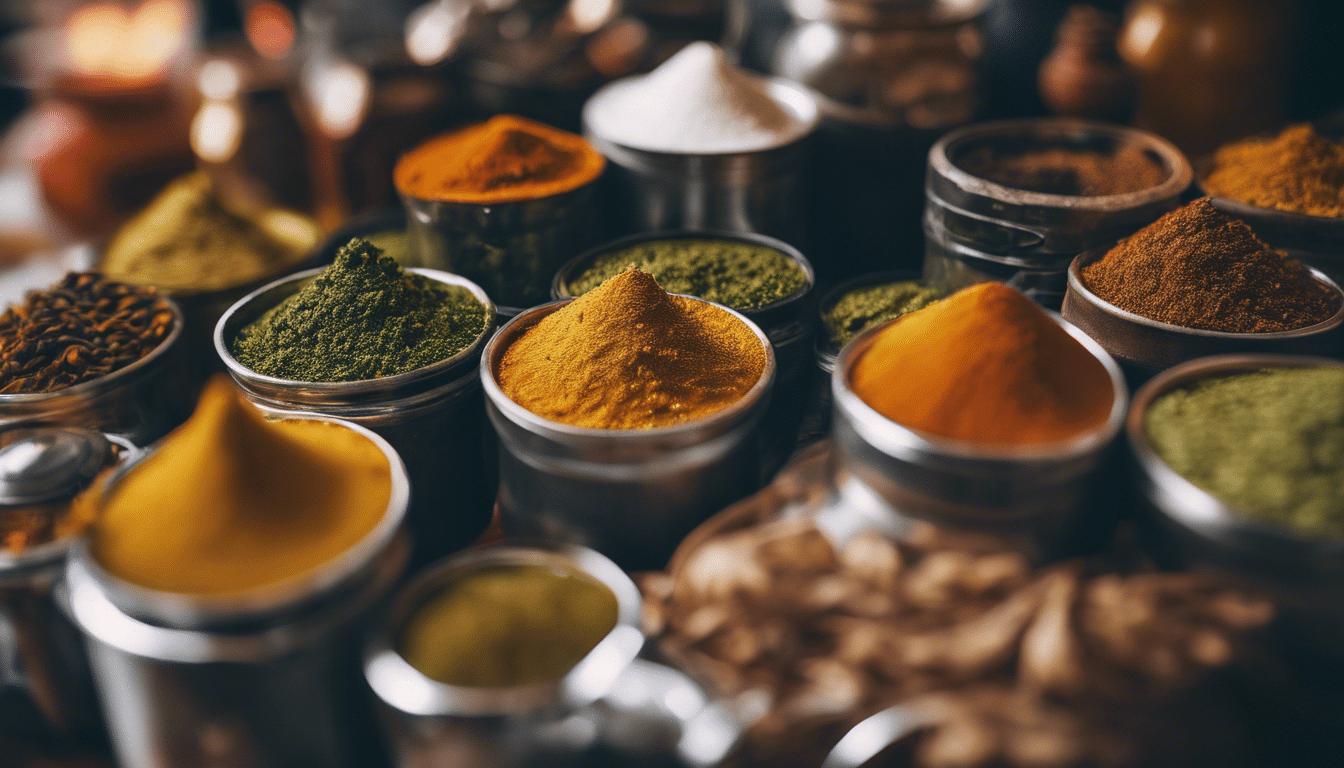
Imagine a marinade that dances on your palate, blending herbs, spices, and a tangy essence that celebrates the diverse flavors of Morocco. This is Chermoula: a vibrant and versatile condiment that is an undisputed cornerstone of Moroccan gastronomy.
The Symphony of Flavors in Every Spoonful
Embark on a culinary journey as we unravel the layers of Chermoula‘s flavor. At first taste, the fresh herbs—typically cilantro and parsley—greet you with their herbaceous vibrancy. They are the verdant base, providing a certain freshness that is distinct to North African cuisine.
Next, the warmth of spices such as cumin, paprika, and a hint of fiery chili flakes join the ensemble. This spice trove is embraced by the sharpness of freshly squeezed lemon juice or the traditional preserved lemon, along with a healthy swig of olive oil to add smoothness and depth.
Garlic, an essential bedrock in Moroccan cooking, offers its characteristic pungency, ensuring that each spoonful of Chermoula is assertive yet harmoniously balanced.
Chermoula’s Culinary Versatility
Chermoula is as flexible as it is flavorful. It’s renowned as a marinade for fish and seafood, celebrating the abundant Mediterranean and Atlantic catches. However, its uses stretch far beyond that. Here’s how it can transform various dishes:
– Marinade for Meats: Whether it’s lamb, chicken, or beef, Chermoula can impart a zesty and robust flavor to your grills.
– Vegetable Dressing: Drizzle over roasted or grilled veggies for an instant flavor lift.
– Flavor Booster: Stir into soups, stews, or tagines for a burst of herby zest.
In essence, to have Chermoula in your culinary repertoire is to possess a magic potion that any dish would welcome.
The Art of Making Chermoula
Creating Chermoula is as much an art as it is a recipe. It begins with selecting the freshest herbs and the best quality spices. Some advocate for a mortar and pestle to bruise the herbs and fully release their essential oils. Others prefer the swift pulsing of a food processor to achieve the desired consistency—a rustic yet spreadable paste.
However you choose to blend it, the key to an authentic Chermoula lies in the balance of flavors and the passion infused into every preparation.
Bringing Chermoula to Your Kitchen
For those enchanted by Moroccan cuisines—like our passionate food explorer—incorporating Chermoula into your cooking is a step toward capturing the essence of Morocco’s rich culinary heritage. It’s a testament to the power of simple ingredients, artfully combined, to create something truly transcendent.
The next time you find yourself longing for a taste adventure, remember that a jar of Chermoula is your passport to a feast of flavors. It’s more than just a condiment. It’s a celebration of Moroccan culture, ready to transform your everyday meals into a vibrant medley of North African spirit.
So, let the boldness of Chermoula infuse your dishes and speak to your culinary soul, for it is within these flavors that the richness of Moroccan hospitality truly shines.
Delving into the Origins of Chermoula
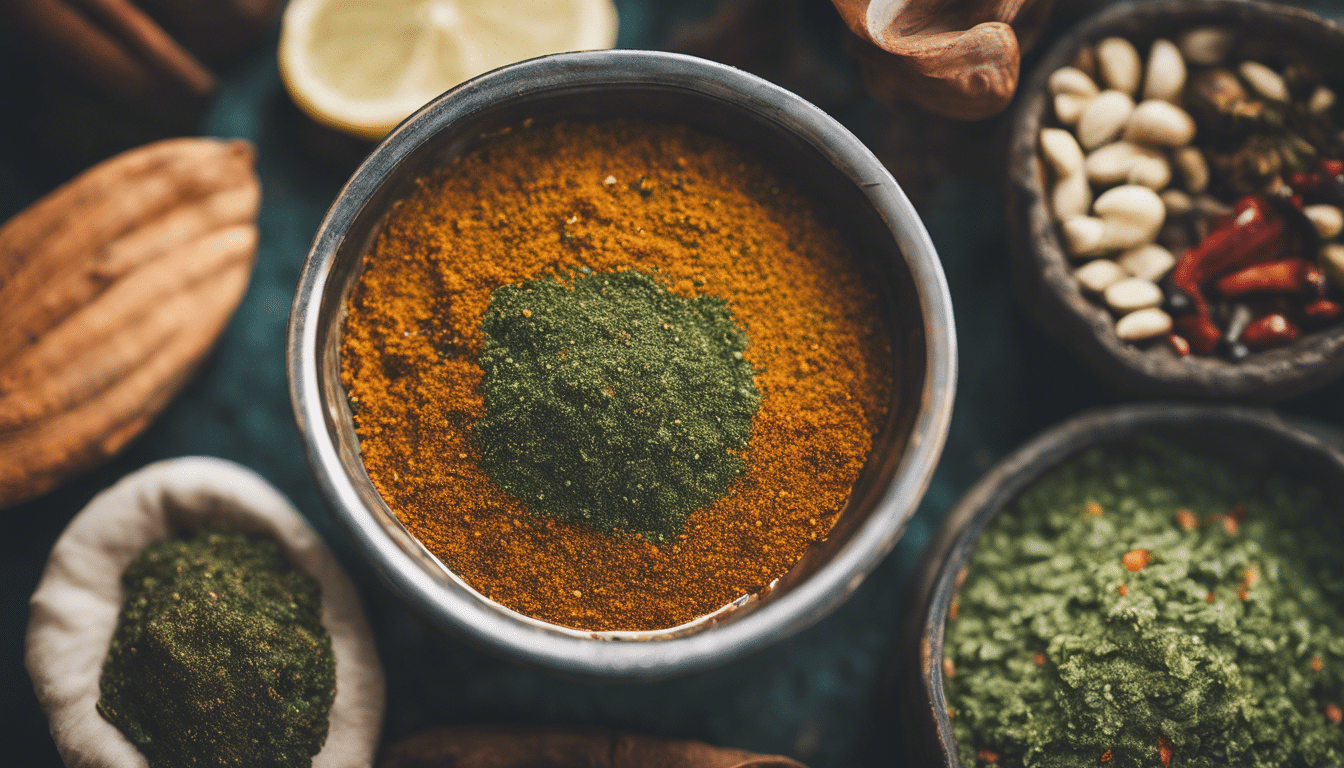
The culinary world is a vast atlas of flavors and aromas, with each region offering its own signature essence. Delving into the origins of Chermoula, we discover not just a condiment but a storied past, rich with culture, tradition, and the whispering secrets of Moroccan kitchens. Like a treasure map leading to the heart of North African cuisine, Chermoula is both a journey and a destination—a symphony of herbs and spices that is essential to the Moroccan culinary narrative.
Chermoula: The Moroccan Flavor Symphony
Embarking on the quest to understand Chermoula, our first foray is into its composition. This marinade-dressing hybrid is the crescendo of vibrant ingredients: fresh cilantro, parsley, ripe lemons, garlic, and a melody of spices such as cumin, paprika, coriander, and sometimes a whisper of fiery chili. The blend varies from one cook’s cauldron to another, with each adding their personal flourish—a testament to Chermoula’s adaptability and the creativity it inspires.
The Historical Tapestry of Chermoula
Peeling back the layers of time, the origins of Chermoula are as enigmatic as they are entwined with Moroccan history. Was it a Berber creation, an amalgamation of the Amazigh people’s profound understanding of their land’s botanical gifts? Or did it flow from the threads of Arab influences, woven during the Arab conquest, echoing tales of trade, travel, and the cross-pollination of cultures?
While the exact genesis eludes the annals of history, it is clear that Chermoula is a culinary mosaic, reflecting Morocco’s geographical position as a crossroads of civilizations. The Moors, the Phoenicians, and even Andalusian refugees have had their hands in the pot, each shaping the Chermoula we cherish today.
The Socio-Cultural Canvas of Chermoula
Venturing beyond mere ingredients, Chermoula is imbued with socio-cultural significance. It is not just about the zesty, herby flavor it imparts but also the communal essence it carries. Moroccan cuisine is interlaced with the threads of family and community, and Chermoula is a staple at gatherings where food is shared and stories are savored.
It’s a marker of identity, with variations speaking to regional preferences, from the zesty Atlantic coasts to the aromatic peaks of the Atlas Mountains. This diversity within unity is an aromatic allegory for the Moroccan spirit—diverse, vibrant, yet harmoniously blended.
Chermoula Today: A Culinary Legacy Continues
In contemporary kitchens, Chermoula remains a timeless testament to Morocco’s gastronomic legacy. Modern-day culinary explorers use Chermoula to enliven an array of dishes, from the quintessential tagine to grilled fish and vegetables. It’s an anchor in the storm of globalized cuisine, a reminder of the importance of preserving and celebrating heritage recipes.
As a cook with a zeal for bringing the essence of Moroccan riads into every dish, the use of Chermoula is both a privilege and a responsibility. It’s a connection to the past, an homage to the countless unnamed cooks who have preserved this culinary jewel through generations, allowing it to delight palates and kindle imaginations around the world.
In the dance of flavors that is Moroccan cuisine, Chermoula is the maestro, conducting an orchestra of tastes that speak of a land of complexity and contrast, of history, and of heart. As we delve into its origins, we are not just tasting a sauce; we are savoring the soul of Morocco, one spoonful at a time.
Traditional Ingredients in Chermoula
Imagine a marinade that whispers tales of the bustling souks and azure coastlines, where spices and herbs dance together in a symphony of flavors. This is Chermoula, the heart and soul of many Moroccan dishes. As a passionate cook, let me escort you through the vibrant alleys of this traditional condiment’s components, revealing the secrets behind its captivating allure.
Diving into the base of any authentic chermoula, there lie the foundational triad: cilantro, garlic, and fresh lemon juice. Cilantro, known as coriander in some parts of the world, offers a refreshing, almost citrusy undertone while garlic, the great enhancer, intensifies the mixture’s soul. Lemon juice, the zestful acrobat, balances the blend with its bright and tart notes.
Moving deeper into this vivacious concoction, we stumble upon the oils that carry the flavors, typically olive oil. A true essence of the Mediterranean, olive oil doesn’t just combine the ingredients; it enriches them, creating a smooth canvas for the spice performers to tread upon.
Now, behold the spice ensemble – it’s where the real magic of chermoula happens. Paprika and cumin are the lead dancers twirling with smoky and earthy gestures, while the optional chili peppers or cayenne add a fiery kick, like a sparkle in the eye of a beloved. Occasionally, the quiet sophistication of saffron threads joins, adding golden hues and a subtle, luxurious depth.
In chermoula, the art of the ensemble is perfected by a cast of supporting spices and aromatics. The likes of ground coriander, pepper, and salt underscore the melody, ensuring every note is savored. Occasionally, an infusion of preserved lemon rind fortifies the citric overture, while whispers of spices such as ground cumin, cardamom, or turmeric can be heard in different variations, offering unique interpretations of this classic Moroccan staple.
This marinade has an uncanny ability to resonate with a plethora of palates. It dresses seafood with grace, red meat with authority, and vegetables with a refreshing lightness. Yet, chermoula’s personality shines brightest when left to marinate, allowing its components to meld and mature.
For food adventurers like Sarah, chermoula stands not only as a marinade but as a bridge to Morocco’s rich culinary heritage. It’s a potent symbol of the country’s generous spirit and a staple in a cuisine that delights in the joys of shared meals and the warmth of good company.
So, whether swirled into a traditional tagine, spooned over grilled kebabs, or spread atop freshly baked bread, chermoula remains a testament to the enduring beauty of Moroccan gastronomy. Just as every artist finds solace in their palette, every Moroccan-inspired meal finds its spirit within the verdant depths of chermoula – a traditional treasure that continues to inspire cooks and epicureans around the world.

